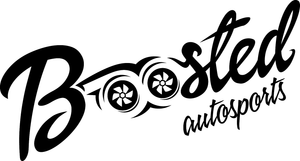What exactly is software tuning?
Software tuning is one of the more abstract concepts in the automotive world. Unlike hardware, you cannot touch, see or hear a tune modification. You can only feel the changes in performance caused by a software tune.
Engine tuning is an adjustment, modification of the internal combustion engine, or modification to its control unit, otherwise known as its ECU (Engine Control Unit). It is adjusted to yield optimal performance, to increase an engine’s power output, economy, or durability.
Thanks Wikipedia!
Our focus in this article is on the software aspects of tuning not the hardware. There are some quotes from Wikipedia which may help you further understand. Note that Wikipedia article refers to software tuning as “Chip Tuning” and for the purposes of this particular article we will treat the term as interchangeable with “Software Tuning”:
Chip tuning refers to changing or modifying an erasable programmable read only memory chip in an automobile’s or other vehicle’s electronic control unit (ECU) to achieve superior performance, whether it be more power, cleaner emissions, or better Fuel efficiency. Engine manufacturers generally use a conservative electronic control unit map to allow for individual engine variations as well as infrequent servicing and poor-quality fuel. Vehicles with a remapped electronic control unit may be more sensitive to fuel quality and service schedules.
There are also a few paragraphs about how performance is obtained:
Performance gains are realized by adjusting the ignition timing advance. Different timing may result in better performance. However, to cope with advanced timing, one must run high-octane gasoline to avoid pre-ignition detonation or pinging. Manufacturers design for a specific timing and this may limit performance accordingly.
In addition, changing fuel maps to coincide with the stoichiometric ratio for gasoline combustion may also realize performance increase. Most manufacturers tune for optimum emissions (running rich to protect the catalytic converter) and fuel economy purposes which can limit performance.
Cars with a turbo fitted can have the requested and allowable boost levels raised, these applications usually have the most effect if the turbo fitted is a low pressure turbo which leaves the most room for improvement.
While we personally would rephrase some of the lines above, it should give you some insight.
Cars with modifications will generally benefit from Software Tuning:
Another reason to change the electronic control unit map is if there are engine, intake, or exhaust modifications to the car. These “bolt-on” modifications alter the way that the engine flows, often causing the air to fuel ratio to change. Without re-mapping the fuel tables, some of the performance gains from the modifications may not be realized.
Modern motor vehicles are much more intelligent than older models and some of our Software Tuning maps allow us to compensate for changes from “bolt-on” modifications, however, let’s leave that for another article!
Moving on, its time to describe the different software tuning options and help you decide which method suits you best.
Software Tuning Methods
Flash Tuning
By changing the software on the ECU (Engine Control Unit) we can modify parameters such as the following (among many others):
- Boost Level
- Fuel Pressure
- Air to Fuel Ratio
- Ignition Advance
By doing so we can improve performance, economy and the general drive-ability of a vehicle.
The standard procedure is that a software file is developed for a predefined range of modifications, uploaded to a server and made available for workshops, mechanics and general consumers to be able to upload upgraded software to their vehicle. This can be a very simple and effective way of improving the performance of your vehicle.
There are also some remote methods of loading Flash Tuning software. This can assist in situations where driving into a tuning centre may not be possible.

Custom Tuning
Specialised Custom Tuning is the most effective means of Software Tuning.
This form of tuning allows for the same sort of changes to be made as Flash Tuning. The added benefit of Custom Tuning is that each file is downloaded directly from the vehicle, modified and uploaded in place of the old software. This means that every single piece of software is customised for that particular vehicle with the modifications at the time. This extra flexibility ensures that the most possible performance can be extracted from the vehicle.
Our full process can be seen below:

If your budget, location and available time allows, Custom Tuning is by far the best option for tuning your vehicle. The dyno is an integral part of the process and we have a full article outlining the reasons why a dyno is a great idea.
Plug & Play Systems

If you are looking for a simple solution with the least amount of fuss and the lowest entry cost, Plug & Play Systems are the way to go.
These systems are able to plug into a few sensors on the motor and modify the signals. This allows for a simple Software Tune to work simultaneously with the factory software. There are some key benefits:
- Usually undetectable by the dealer and thus retain manufacturers factory warranty
- Easy to install, generally without a mechanic
- Simple and reliable power upgrade
- Relatively low cost to purchase
- Can be removed relatively easily
While they have their advantages, there is one drawback, they will not be able to perform as effectively as a Flash or Custom Tune.
That said, if the absolute best power gains are not your top priority and the benefits outweigh the drawbacks, then Plug & Play Systems are the way to go.
An install guide for a BMW 428i is below:



For the average motoring enthusiast, a few sensors on the top of the motor wont be too difficult to find, making the installation process quite straightforward.
Need Some Help?
If you are not sure which option is best for you, why don’t you ask? We have a number of professional technicians who have the experience to help you find the best solution for your particular situation. Ask yourself these questions:
- Have I done significant modifications to my vehicle?
- Am I looking for the most power or just a little more grunt?
- Do I tow often?
- Am I on a budget or do I want the best of the best?
- Am I handy enough to install a Plug & Go System?
If you still aren’t sure, CLICK HERE to contact us for help

































